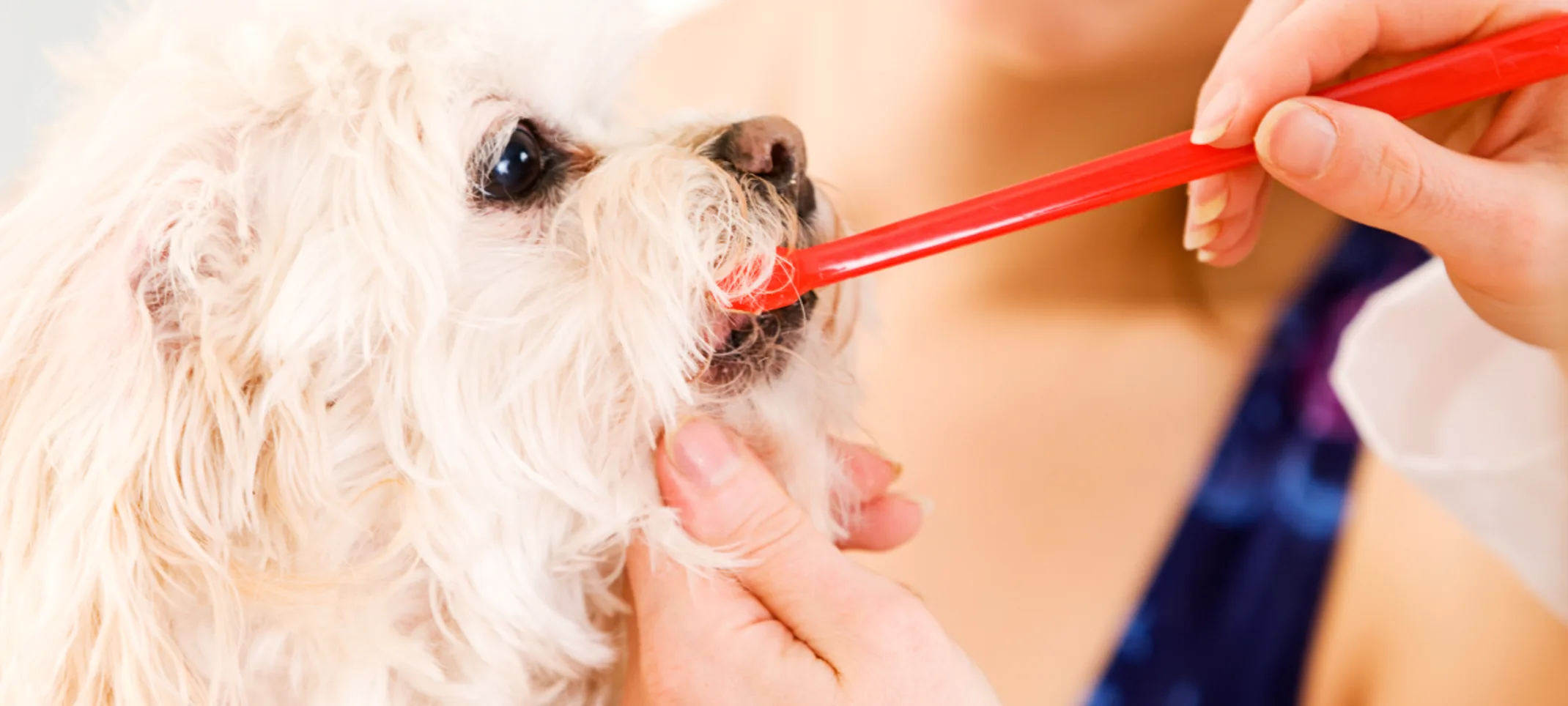Acoaxet Veterinary Clinic
Brushing Your Pet's Teeth
Tooth brushing is the single most effective means of removing plaque from the visible surface of the tooth. When you brush your pet’s teeth, initially the goal is to make the brushing experience a positive one. To accomplish this you need to gradually introduce your finger or toothbrush into your pet’s mouth for short periods of time and give a strong reward immediately afterwards. This desensitization process must be repeated over and over again.

When your pet is tolerating your finger or toothbrush well, the goal is to accomplish the actual cleaning of the teeth. This is best done at the same time each day, for example before the evening meal.
Select a brushing device (toothbrush, finger brush, etc.)
Select a pet toothpaste--do not use human toothpaste. Pet toothpastes are designed to be swallowed, taste good to pets and contain enzymes or antiseptics that help control plaque.
Concentrate on brushing the outside of the upper teeth and ignore the insides completely. A back and forth motion for 30-60 seconds each side should be adequate if done daily (that’s right—DAILY!)
For dogs, keep your pet’s mouth closed with one hand on your pet’s muzzle and brush the teeth with the other. A finger brush or pet toothbrush are good brushing devices.
Tip: put pet toothpaste inside a Kong toy. Your pet will gnaw away at the Kong for long periods of time—and be brushing his teeth as well!
How to brush your cat’s teeth
Cats can be trained to tolerate brushing of their teeth. The overall process is called desensitization by behavior modification. First thing is to start early if you can as kittens are much more likely to allow this invasion of their privacy. If you need to start as an adult then you need to find a strong reward!!! The trick for cats is to introduce your finger or a small device such as a Q-tip for only a short (1-3 seconds) period of time immediately followed by the strong reward. A favorite flavor on the Q-tip or finger would be ideal. This needs to be repeated many times before anything significant can be accomplished in removing plaque. If you overwhelm the cat by being too aggressive all will be lost. If you can get your cat to accept something in its mouth you have come a long way. This is going to require patience and persistence on your part!
